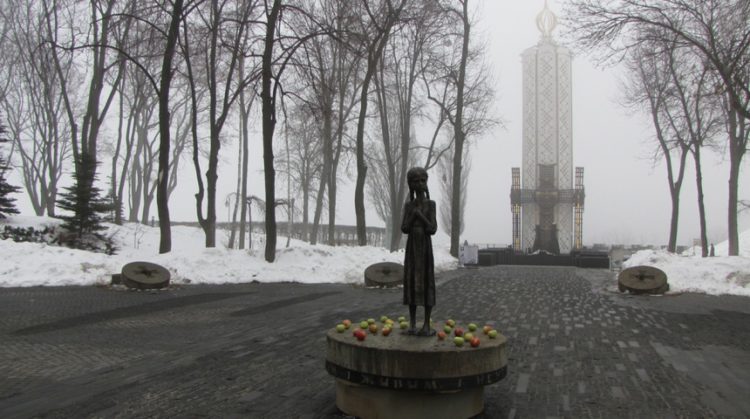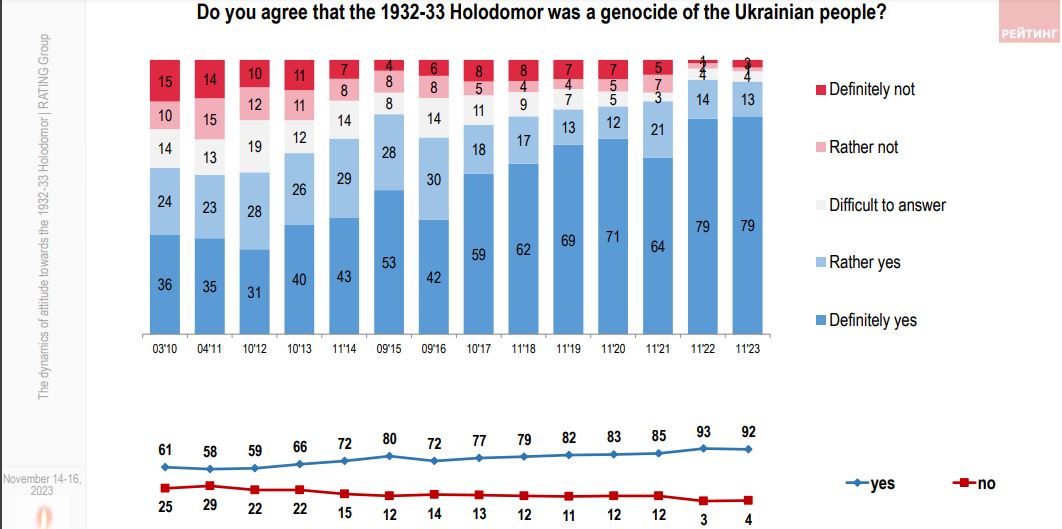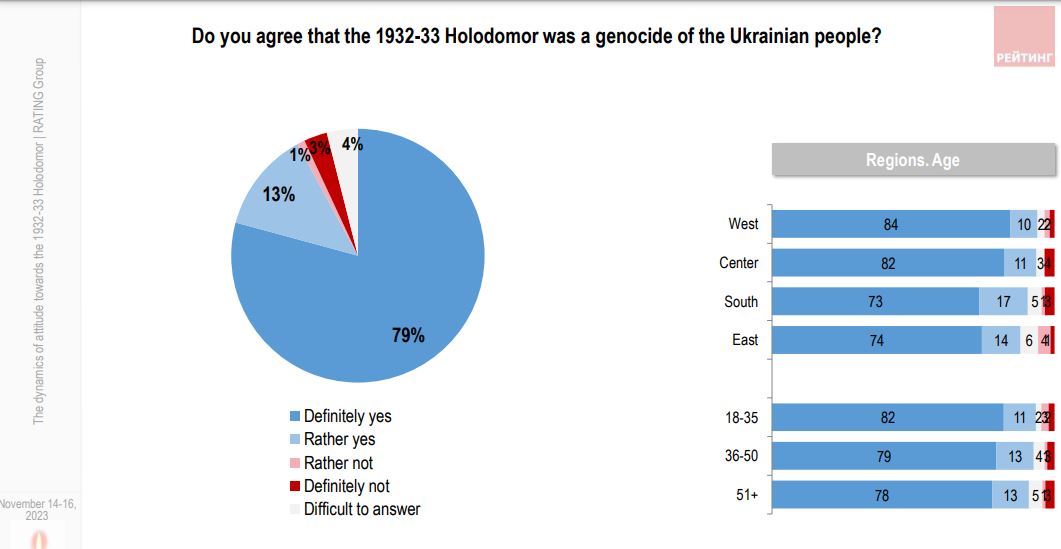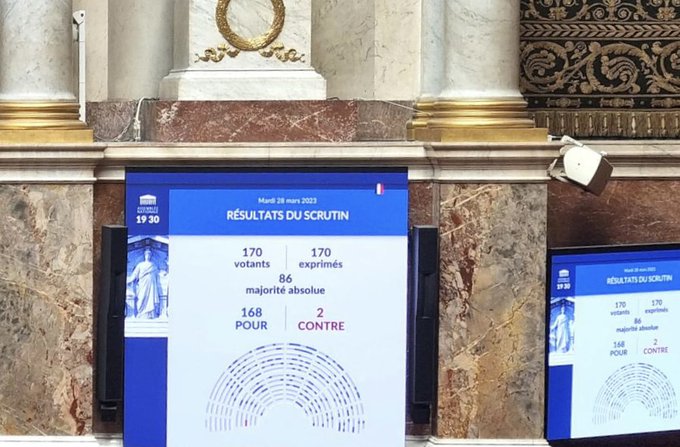In a significant shift, a recent survey by the Rating Group has shown that the perception of the Holodomor, Stalin's man-made famine, has evolved dramatically over the past decade.
In 2010, 60% of respondents considered the Holodomor of 1932-1933 as a genocide against the Ukrainian people. However, the latest survey in November 2023 indicates a substantial change, with a staggering 92% of respondents now agreeing with this statement.
The 1932-1933 Holodomor was intentionally organized by the Soviet authorities, more than 4 million Ukrainians, or 13% of the population, perished due to famine, the Ukrainian pollster Rating Group says. References to the "great famine" can be found in almost every Ukrainian family.
The sociological group "Rating" surveys the Ukrainian public attitudes toward the Holodomor annually starting from 2010.
According to the pollster, back in 2010, only 60% of Ukrainians surveyed by the Rating Group answered affirmatively to the question "Do you agree that the Holodomor of 1932-33 was a genocide of the Ukrainian people?"
The latest survey conducted in November 2023 showed that now 92% agree tha the Holodomor was a genocide, with only 4% disagreeing, and 4% undecided.
"The Holodomor of 1932-1933 is recognised [as genocide] by the absolute majority of residents in both western, central, and southeastern regions of the country. Additionally, no significant deviations in age distributions on this issue have been recorded," Rating Group noted.
The sample population of the survey carried out on 14-16 November 2023 was 1,000 respondents, representative by age, gender, and type of locality.
"Sampling error for the study with a confidence level of 0,95% [was] no more than 3,1%," Rating says.
Read also:
- Holodomor: Stalin’s punishment for 5,000 peasant revolts
- New York proclaimed November 2023 as Ukrainian Holodomor Remembrance Month
- Canada contributes to Holodomor Museum’s completion in Ukraine
- Welsh parliament recognizes 1932-33 Holodomor as genocide of Ukrainian people
- European Parliament recognizes Holodomor as genocide against Ukrainians
- An Austrian engineer showed these Holodomor photos to Cardinal Innitzer in 1933, pleading for aid to the starving
|






